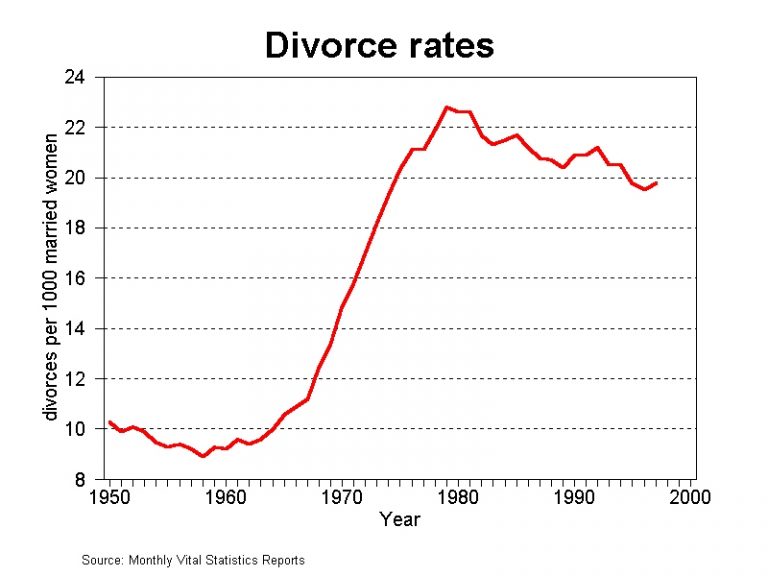The divorce rates overall are currently falling but they are rising in couples over the age of 50

The Rising Divorce Rates Among Couples Over the Age of 50

Divorce rates have been a topic of interest for many years, as they not only reflect the state of marriages but also the societal shifts in values and norms. In recent times, a particular trend has been observed: while overall divorce rates are declining, there has been a substantial rise in the number of divorces among couples over the age of 50.
This phenomenon has been coined “gray divorce,” and it raises questions about why older couples are opting for separation when they were expected to be in stable, long-term marriages. This article aims to delve into the reasons behind this trend while also shedding light on the possible consequences.
One of the main factors contributing to this rise in divorce rates among older couples is the changing perceptions and expectations of marriage. Unlike previous generations, where divorce was considered taboo, societal attitudes towards divorce have become more accepting. This change has empowered couples to reassess their relationships and make decisions that prioritize their personal happiness and fulfillment.

Financial independence is another significant factor that plays a role in the increasing divorce rates among couples over 50. Many individuals in this age group have built successful careers or acquired financial stability over the years. Consequently, they feel more empowered to leave unhappy or unfulfilling marriages, as they are confident in their ability to support themselves. Financial independence provides a sense of security and freedom, making divorce a viable option for them.
Additionally, the empty nest syndrome is often cited as a reason for the surge in gray divorces. Many couples tend to stay together for the sake of their children and delay dealing with their own issues until the children leave home. However, once the children grow up and move out, couples often find themselves facing a relationship that has become stagnant or has lost its spark. They may realize that they have grown apart over the years and no longer share common interests or goals, leading them to seek separation.
Health and longevity have also been contributing factors to the rise in gray divorces. As individuals live longer, they are increasingly reluctant to spend their remaining years in an unhappy or unfulfilling marriage. Older couples are increasingly prioritizing their emotional, physical, and mental well-being, and if their current marriage is not meeting those needs, they are willing to make the difficult decision to divorce and seek happiness elsewhere.
It is important to note that while gray divorces can provide individuals with newfound freedom and happiness, they are not without consequences. Divorce in later life often carries unique challenges, such as financial instability, loneliness, and the need to rebuild social networks. Therefore, it is crucial for individuals considering a gray divorce to seek professional advice and support throughout the process.
In conclusion, the overall divorce rates are indeed declining in many age groups, but the same cannot be said for couples over the age of 50. Changing perceptions of marriage, financial independence, the empty nest syndrome, and prioritizing personal well-being are some of the key factors contributing to this rising trend. While gray divorces can provide individuals with a new lease on life, it is essential to consider the potential challenges that come with such a significant life change. Seeking professional advice and support can help mitigate these challenges and pave the way for a more fulfilling future.
Tags
Share
Related Posts
Quick Links
Legal Stuff

